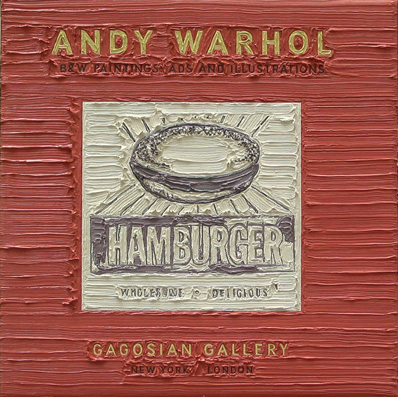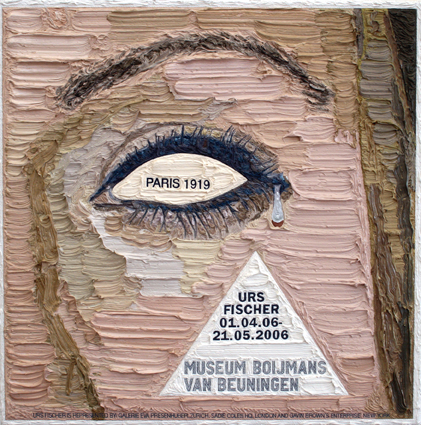
Simon Linke Warhol, 2004. Courtesy Mireille Mosler Ltd.
(from the press release) No one seems to be sure what the decline of modernism’s cultural influence, beginning sometime in the 1950’s and 60’s, has led to. The return of narrative and ornament in the art and architecture of the 1970’s suggested an effort to break with the immediate past, but the privileging of rationalism as a guiding social order evident in the idea of markets finding their perfect equilibrium continues to dominate economic discourse, despite the occasionally irrational results. While architects like Frank Gehry, Zaha Hadid, and Rem Koolhaas seemed to have represented “a new way forward,” the prevalence of a creeping re-modernism found in the ubiquitous Corbusier-like, double-height urban lofts sheathed in glass and filled with mid-century modern furniture confirms the continued appeal of modernism’s aesthetic essentialism.

Simon Linke Urs Fischer, 2008. Courtesy Mireille Mosler Ltd.
In art, the early-modern conflict between non-objective painting and representation reached its peak and waned, as the eventual embrace of pluralism paralleled the development of a global, unregulated, free-market economic system. As pluralism was seen to have trumped ideology, the problem of content became increasingly slippery. With the historical determinism of the modernist project now suspect, its inherent iconoclasm began to look puritanical in the context of mass culture’s iconophilia. The series of reactions to modernist orthodoxy (Conceptualism, Minimal Art, Pop Art, Appropriation, etc.) broke free of the aesthetic cul-de-sac of formalism, but certain aspects of modernist thinking (the primacy of authorship, novelty, the “white cube”) have either lingered on or reasserted themselves within the arts.
Acknowledging the confines of discourse while highlighting its means of representation, PICTURE NO PICTURE hopes to raise questions concerning what can be “said,” within the context of visual art. While the reductive aesthetic of the modernist art object proposed a set of limits to insure its autonomy and purity, much of the work in this exhibition employs a spare aesthetic that highlights the phenomenological experience of the gallery setting, underlining the significance of the art object’s context to its reception.
As consumerism continues to expand, the endless manufacture of image and text produces a kind of baroque static, provoking restlessness rather than comprehension. Connecting through the abstraction of expanding personalized technologies has begun to take precedence over face-to-face exchange, encouraging the development of the subject into what Gordon Matta Clark once referred to as the “passive isolated consumer.” In an era of increased physical disorientation afforded by technological short cuts which alter logical sequencing in time and space, the works in PICTURE NO PICTURE reflect on the limits and conditions of the exhibition space (both literally and metaphorically), while underlying the viewer’s self-awareness as a key aspect in shaping their experience of a work of art.
PICTURE NO PICTURE
April 28 – May 29, 2011
Carriage Trade
62 Walker Street
New York, NY 10013
www.carriagetrade.org

 RSS
RSS
